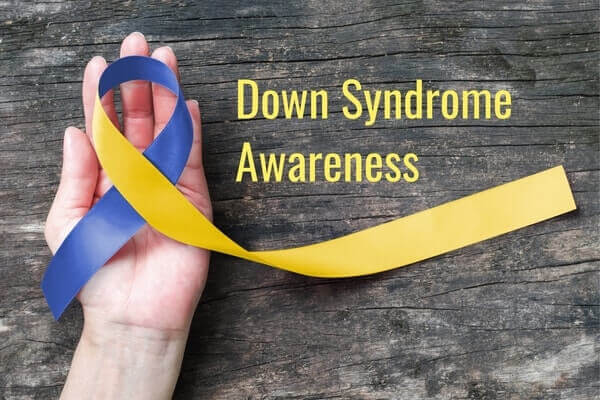
In 2001, my life was forever changed. That’s when my first child was born. I will never forget it. I was with my wife as she labored for over 24 hours, and then there is this beautiful baby girl.
I wept. I did not expect tears, but I was so overwhelmed by this beautiful creature that I instantly loved more than anything else in the world. She was perfect. She was gorgeous. And she had Down syndrome.
I knew what that meant. My wife and I both had a lot of experience working with people with special needs. She spent her summers as the women’s director at a camp for children with special needs and was the attendant for a fellow student that was wheelchair bound while in college.
I was friends with special needs students in high school and was working as a Special Education Para-educator at the time of my daughter’s birth. So, her diagnosis didn’t shock or scare us in the least. We were only concerned with her health.
![]() Importance
Importance![]() Cause
Cause![]() Types
Types![]() Health
Health![]() Community Awareness
Community Awareness
What Is Down Syndrome?
Named after John Langdon Down, Down Syndrome is the condition where an individual has a full or partial extra copy of the 21st chromosome, also known as Trisomy 21, and is an intellectual developmental disability.Typically the nucleus of each cell contains 23 pairs of chromosome, half of which are inherited from each parent.(1)(2)
This additional genetic material alters the course of development and causes the characteristics associated with Down syndrome. A few of the common physical traits of Down syndrome are low muscle tone, small stature, an upward slant to the eyes, and a single deep crease across the center of the palm – although each person with Down syndrome is a unique individual and may possess these characteristics to different degrees, or not at all.(3)
This additional genetic material alters the physical appearances of individuals with Down syndrome. This includes:(4)
- A flattened face, especially the bridge of the nose
- Almond-shaped eyes that slant up
- A short neck
- Small ears
- A tongue that tends to stick out of the mouth
- Tiny white spots on the iris (colored part) of the eye
- Small hands and feet
- A single line across the palm of the hand (palmar crease)
- Small pinky fingers that sometimes curve toward the thumb
- Poor muscle tone or loose joints
- Shorter in height as children and adults
A person with with Down syndrome may have all of these or only a few - each individual is unique and will possess different characteristics.
Why Is Down Syndrome Awareness Important?
Most people only know that individuals with Down syndrome look slightly different than the rest of us. They know little about the challenges, differences, and abilities of people with Down syndrome. They can, without meaning to, say hurtful or insensitive things about people with Down syndrome, or avoid them altogether.
Even though people with Down syndrome might act and look similar, each person has different abilities. People with Down syndrome usually have an IQ (a measure of intelligence) in the mildly-to-moderately low range and are slower to speak than other children.
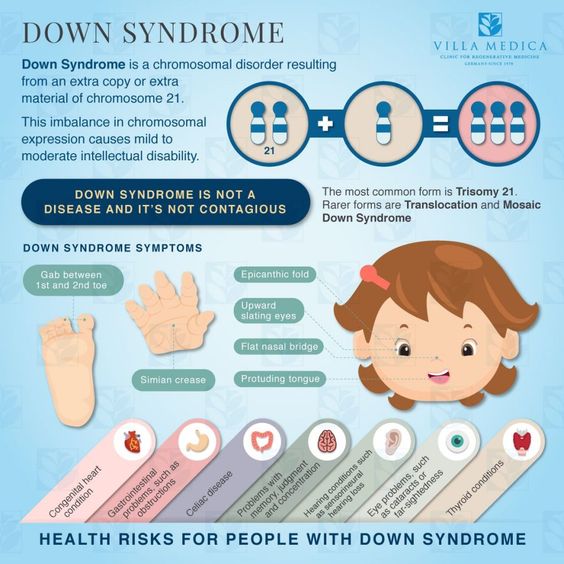
It’s important to note that Down syndrome is not a disease. It is a syndrome or a condition, which means it is inappropriate to say that someone “suffers from” or is “afflicted with” Down syndrome. People simply have Down syndrome.
What Causes Down Syndrome?
The short answer is that we still do not know. The only thing that scientists have been able to determine is that the chances of having a baby increase from 1 in 700 to 1 in 100 once a woman is over 35-years old.
However, since the majority of births happen before a woman is 35, over 80% of children with Down syndrome are born to mothers younger than 35. There is no definitive research showing a link to environmental factors or to activities of the parents before or during pregnancy.(5)
Types of Down Syndrome
There are three different types of Down syndrome, all difficult to determine due to the fact that features and behaviors are similar.(6)
- Trisomy 21:About 95% of people with Down syndrome have Trisomy 21. With this type of Down syndrome, each cell in the body has 3 separate copies of chromosome 21 instead of the usual 2 copies.
- Translocation Down syndrome:Occurs in about 3% of cases. An extra part or a whole extra chromosome 21 is present, but is attached, or translocated, to a different chromosome. .
- Mosaic Down syndrome:This type affects about 2% of the people with Down syndrome. For children with this type, some of their cells have 3 copies of chromosome 21, but other cells have only the two copies. They may exhibit the same features with the others, but some features may be fewer.
Common Health Problems in People with Down Syndrome
In addition to intellectual and developmental disabilities, children with Down syndrome are at an increased risk for certain health problems. However, each individual with Down syndrome is different, and not every person will have serious health problems.(7)
- Heart defects.
- Vision problems.
- Hearing loss.
- Infections.
- Hypothyroidism.
- Blood disorders.
- Hypotonia (poor muscle tone).
- Dental problems.
- Epilepsy.
- Mental health and emotional problems.
Thankfully, most of these can be treated throughout their lifetimes through medication, surgery, or other hospital interventions. No matter the case, make sure to contact your doctor to see how the health problems that affect you or your loved one can be treated.
Can People with Down Syndrome be Active Members in Their Community?
Of course!
Despite the challenges they face on a day-to-day basis, people with Down syndrome live full, happy, and productive lives. Nowadays, most graduate from high school and many even go to college. They live independently, are productive, and even find love. In addition, many employers have learned that people with Down syndrome make loyal and enjoyable employees.
In addition, words are important, and the way that we talk about people with Down syndrome is vital to improving how they are received and treated by society. The archaic word retarded should never be used to describe a person, regardless of their disability. Do not let your friends, co-workers, or family members use this word unchallenged, even in jest. It is not funny, and is never appropriate.
Like everyone else, if you invest in someone, they invest in you. People with Down syndrome can flourish just like any other person.
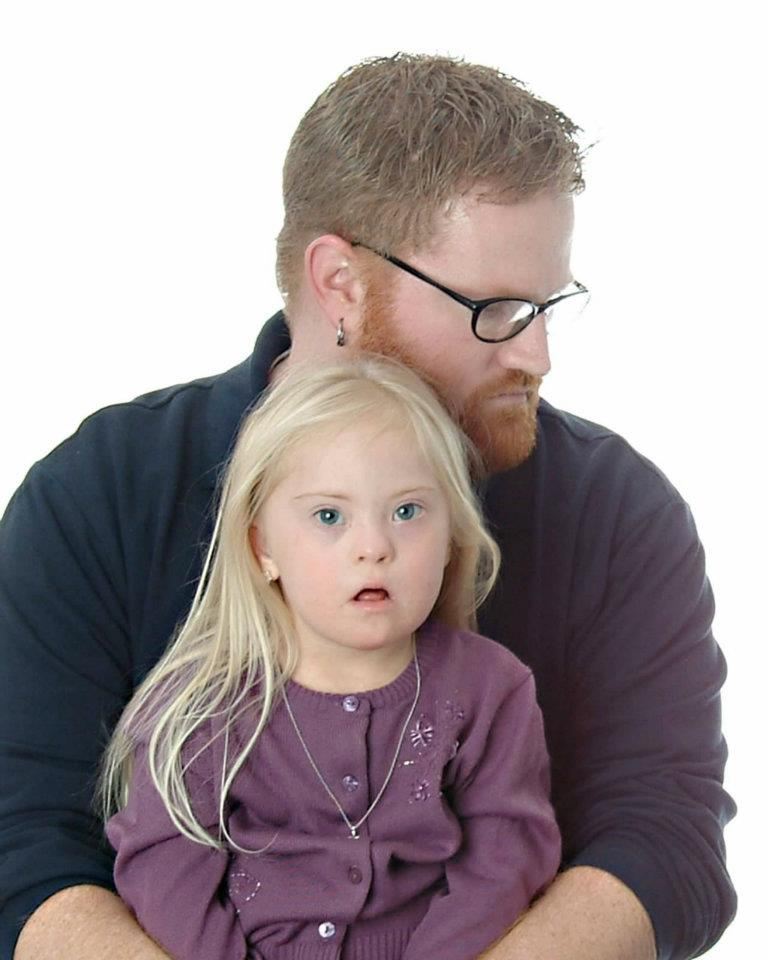
Building Awareness
Thankfully, there are many, many ways to raise awareness for Down syndrome.
In the past, and sometimes even now, parents that hear the news that their child has Down syndrome become frightened. Some parents mourn the loss of what their parenting could’ve been. It’s important to remember, however, that just because your child has Down syndrome does not mean a future of hospitals, institutions, or social isolation. They have potential, and they have purpose.
For starters, a way to become aware are with the organizations. Because Down syndrome occurs worldwide, there are thousands of national and local organizations that you can look to for resources. The best place to begin is with the National Down Syndrome Society. Below is a map of the local affiliates of NDSS, ranging from large operations to small neighborhood groups.(8)
These groups may include: new parent support and education, family meetings, sibling and grandparent support, recreational activities, libraries, helplines, regional conferences, partnerships with clinics, training for medical professionals, and Advocacy/Buddy Walks.
In summation, you won’t be without help.
Besides organizations, you can also spread awareness through your own personal efforts! Here are some ways you can spread the love:
- Share your support on social media
- Participate in a fundraiser
- Volunteer with Down syndrome organizations
- Purchase your own ribbon, the colors are blue and yellow, or silicone wristband (check out rapidwristbands.com to create your own!)
- Educate the public via schools, churches, or other community establishments
Also, don’t forget to celebrate March 21st, World Down Syndrome Day, and October, Down Syndrome Awareness Month. You can attend a local event leading up to March 21st, and you can participate in BUDDY WALK in October, a program introduced by NDSS that promotes acceptance of children with Down syndrome through walking.
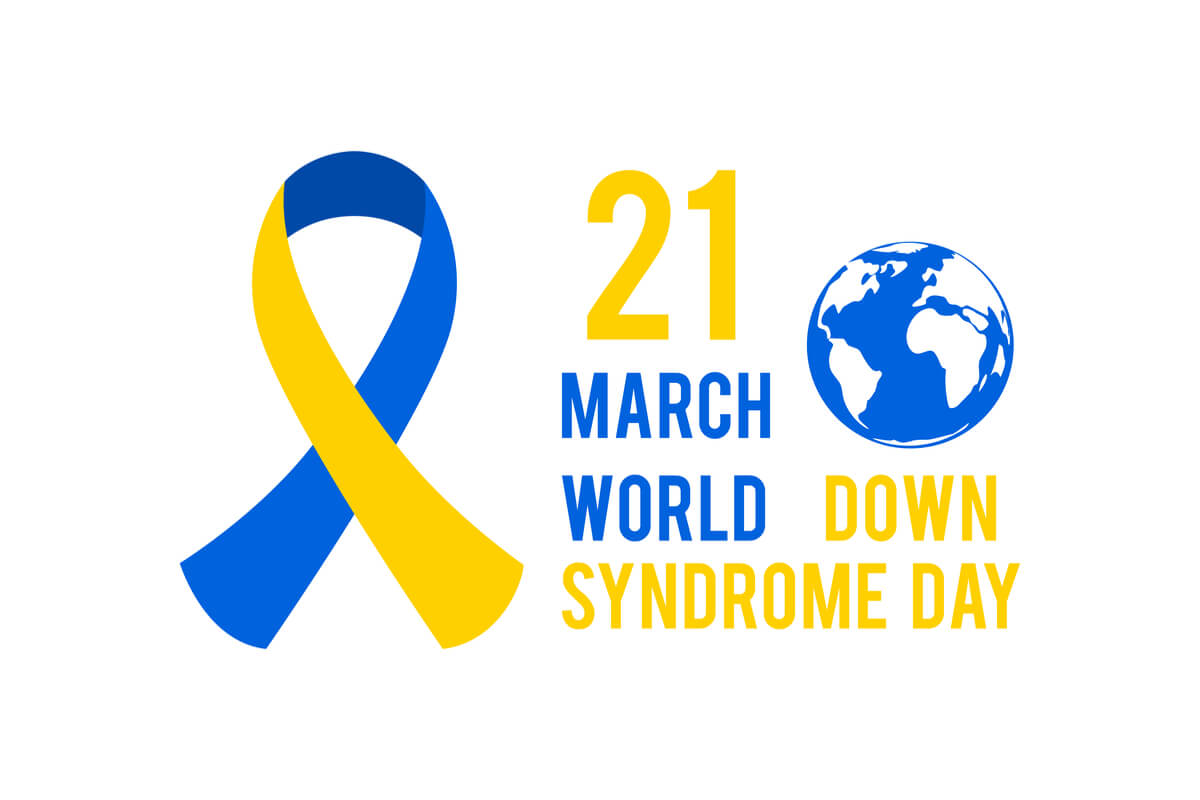
If you are a new parent of a child with Down syndrome, consider just attending one of these events with your child. You will meet other parents that can be a valuable lifeline and resource when you feel overwhelmed and alone.
Your participation is only limited by your imagination.
Final Thoughts
Whether you’re walking, educating yourself, or simply a parent, you aren’t without resources and you definitely aren’t alone. We are here as a resource for you as well, no matter if you’re a parent, an educator, or an advisor. Or you just simply want to learn.
Just remember to breathe, and know that awareness starts with you.
What conditions or disorders are commonly associated with Down syndrome? (7)
.png)
.png)
.png)
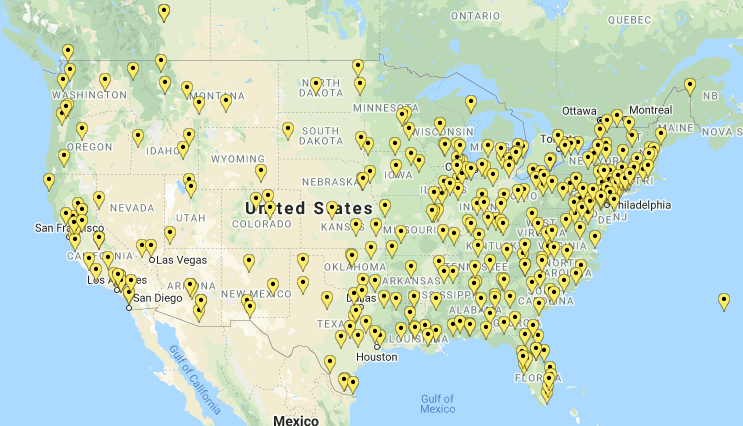


.png)
.png)

.png)
.png)
.png)
.png)
.png)
.png)
.png)
.png)
.png)
.png)
.png)
